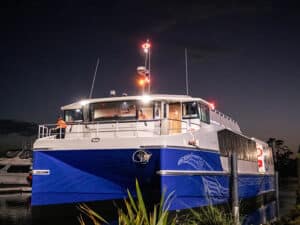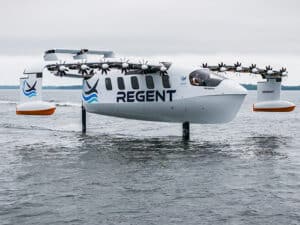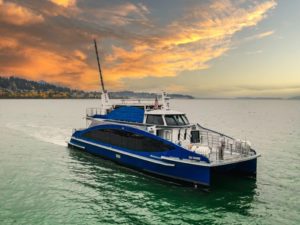
1962-built Mackinac Island ferry will go electric
Written by Nick Blenkey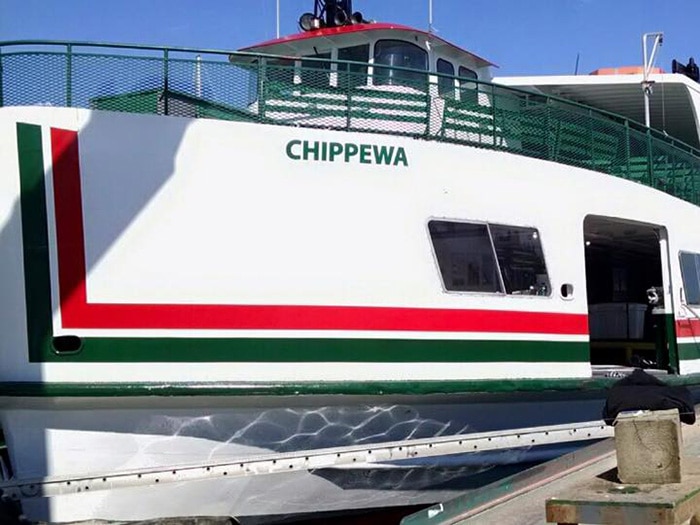
Star Line Mackinac Island Ferry Company (MIFC), will replace two 1988-built diesel engines with two brand new electric propulsion motors on 84-foot Chippewa. [Image: Star Line]
A $3.06 million award from the Michigan Department of Environment, Great Lakes, and Energy (EGLE) Fuel Transformation Program will support the first-ever conversion of a Mackinac Island passenger ferry to zero-emissions electric power.
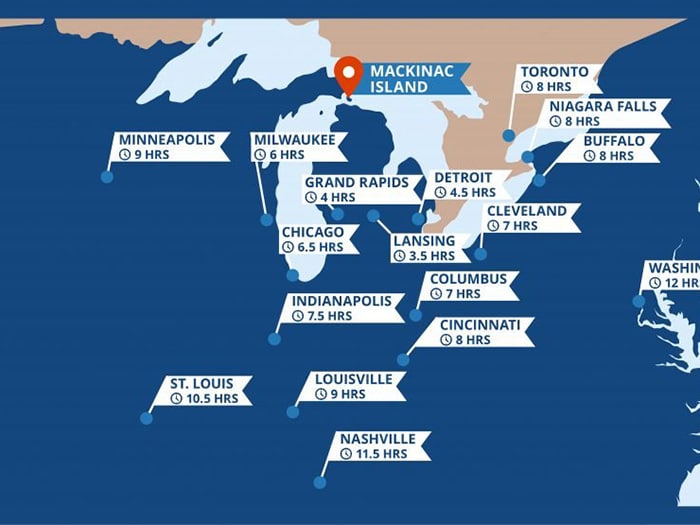
Star Line Mackinac Island Ferry Company (MIFC), will replace two 1988-built diesel engines with two brand new electric propulsion motors on a ferry, the Chippewa, reducing greenhouse gas emissions by 14,152 metric tons of carbon dioxide equivalents and 887 metric tons of nitrogen oxides over the boat’s lifetime. The project will begin immediately as part of a two to three-year overhaul that will redesign and modernize the vessel’s hull and appearance.
The 84-foot ferry Chippewa, built in 1962, is expected to carry 250-300 passengers after the electric conversion and MIFC’s concurrent redesign and modernization of the vessel.
“Converting a ferry in the Mackinac fleet to electric will build on our clean-energy leadership and help us achieve the goals of the MI Healthy Climate Plan to make our state carbon-neutral by 2050,” said Michigan Gov. Gretchen Whitmer. “The budget I put forward includes several investments in this space, and today’s ferry grant is another step forward as we build a brighter future for Michigan.”
The grant covers half the cost of the project, which includes installing 1.5 megawatts in shore power infrastructure at the Mackinaw City ferry dock, as electric power upgrades are also planned for the ports of St. Ignace and Mackinac Island.
“This project is a first critical step in the strategy to upgrade and modernize marine transportation in the Straits of Mackinac,” said Director Chris Byrnes of the Mackinac Economic Alliance (MEA). “Of course, Mackinac Island is famous for alternative modes of transportation, as cars are not allowed on the island. Everyone walks, rides bikes or horses and, of course, ferry boats, so the island is already a Michigan leader in alternative forms of transportation.”
As the primary means of transportation to Mackinac Island, ferries serve about 500 year-round islanders and 750,000 visitors a year, with a summer peak of more than 16,500 a day. During peak months, ferries make up to 125 round trips daily.
After converting the Chippewa to electric power, MIFC intends to similarly upgrade the propulsion systems on its other seven steel vessels that operate passenger or freight service to Mackinac Island. Eventually, MIFC will evaluate its seven high-speed aluminum passenger vessels for upgrades to electric or hybrid electric propulsion.
MORE CONVERSIONS TO COME
The Chippewa conversion is a pilot project for electrification of 28 Mackinac Island ferries in all. It marks the launch of the MEA’s Mackinac Marine Mobility Strategic Plan to create full-time, year-round marine and shipbuilding jobs in the straits region. Also partnering in the project is designer lncat Crowther.
The project is the first initiative from the Mackinac Island Transportation Master Plan, conducted by the Michigan Department of Transportation as the key piece of a larger initiative to modernize the ferry fleet and freight ships serving the region. That effort includes transition from fossil fuels, supported by creating local shipbuilding and servicing jobs and a marine industry training hub. The long-term goal is to transition all 138 Upper Great Lakes ships in the 50- to 200-ton range to electric or hybrid-electric power.
In a related move in January, plans to build a new, more efficient, reliable, and environmentally friendly Charlevoix-to-Beaver Island passenger ferry advanced with a $6.63 million federal grant added to a previous $14 million investment from the state.
A separate FTP Part 2 grant of $2.18 million to the city of Sault Ste. Marie in the Upper Peninsula will cover approximately two-thirds of the cost to install electric shore power at an international dock just downstream from the Soo Locks, reducing greenhouse gas emissions by 9,405 metric tons of carbon dioxide equivalents and 650 metric tons of nitrogen oxides, over the project’s lifespan.
The shore power, supplied by nearly 50% renewable energy, will reduce the need for docked vessels to idle their diesel engines, lowering carbon emissions and improving air quality for nearby workers, visitors, and residents. Part of the match for the project comes from a 2018 federal grant of $20.7 million awarded to the City of Sault Ste. Marie to rehabilitate the Carbide Dock Port.

